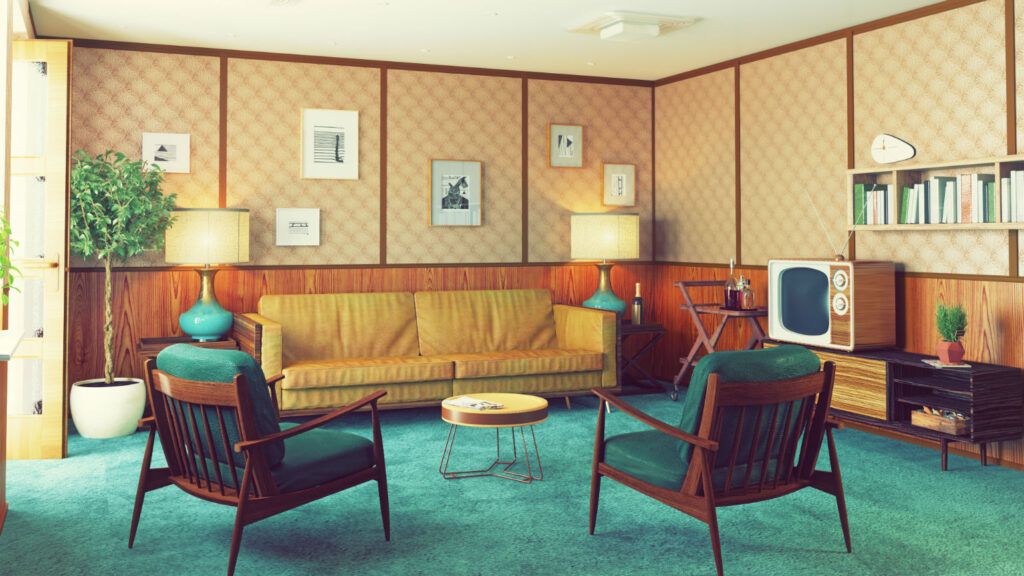George Drummond, a loving husband and retired IT consultant from Cardiff, Wales, found a unique way to help his wife cope with the final stages of Alzheimer’s.
Drummond, a DIY fan, crafted an entire 1960’s themed room complete with wooden TV sets, vintage wallpaper, and vinyl record racks, during his wife’s hospital stay. The room was meant to provide familiarity and comfort to Drummond’s partner while she battled the late stages of the memory-stealing disease.
The devoted husband recalls how sitting in front of the fire on the vintage sofa in front of an old TV set helped his wife, Elaine, stay “calm and happy.” He got the idea for the room after hearing a few nurses at the facility Elaine was staying in brainstorming about way to help patients with dementia and Alzheimer’s feel more at ease in their new surroundings.
“I heard the nurses talking about the plans for the rooms and I said if they needed someone to help with some decorating and some tiling then I was happy to lend a hand,” Drummond told The Daily Mail. “I did the first room and took Elaine in there a few times – it had a great effect on her just to sit in a chair and listen to some old records.”
This idea of reminiscence therapy isn’t entirely new in the Alzheimer’s world. According to Dr. Jason Karlawish, co-director of the Penn Memory Center, while reminiscing won’t alter the course of the disease, it does have a positive effect on patients.
“The benefit of reminiscence therapy is that it taps into memories that are well-learned,” Dr. Karlawish told Mashable. “It’s not so much that they’re old memories, it’s that they’re well-learned memories. Memories that are attached not just to a fact, but to a smell, to images, to music.”
In 2012 a Gloucestershire care home opened a 1950s “memory” street, complete with era-appropriated shops and pubs, to help its patients feel comfortable and, hopefully, recall past life events. Similarly, a care facility in Pennsylvania has begun crafting 1940’s style rooms to help jog the memory of its dementia patients.
The rooms become conversation starters between family members and create a familiar environment for those whose day-to-day life can suddenly feel strange and frightening.
Sadly, Drummond’s wife passed away just five months after being admitted to the care facility in Wales, but that hasn’t stopped him from trying to help others fighting this terrible disease.
He’s continued to volunteer at the facility, creating a total of four rooms at the hospital – a 1950s sitting room, a 50s/60s style kitchen, a 60s quiet room and a 60s-style seaside cafe.
“Since the room has been finished and open to patients I have never seen the room empty and I used to come in here every day to visit Elaine,” Drummond said. “’People are making a lot of use of it and you don’t feel like you are in a hospital environment at all.”





